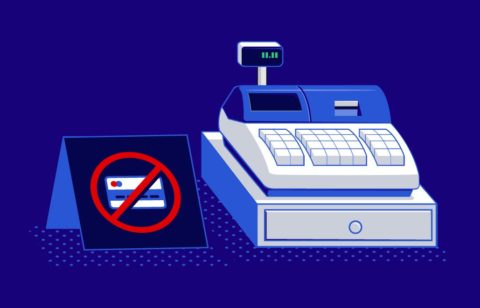If you think that identity theft could never happen to you, you might want to think again. In 2012 alone, about 12.6 million Americans were the victims of ID theft. That was about 1 million more than in 2011. The identity thieves also made off with $3 billion more then in 2011. Plus, a big percentage of this increase was as the result of big jumps in ID theft’s most serious forms such as new account fraud. This is where a thief uses a victim’s personal information to open loans or get new credit cards. In fact, new account fraud increased 50% last year.
Common misconceptions
While ID theft has often been in the news, there are a number of misconceptions about it and how to best protect yourself from this crime. For example, many people worry about keeping their credit card information secure when they are shopping online. However, the top ways that ID thieves steal your data is still very low-tech. They most often get the information they need from your personal documents, via mail theft or when you give your information over the phone.
1. Stay one step ahead
You can’t totally guard against identity theft, as no one is immune. But if you have a little knowledge about how these thieves operate and use some common sense, you can stay one step ahead of them.
First, understand that ID thieves can steal your information without having your card’s number And they don’t need it to get your identity. These criminals are very crafty. All they need sometimes is a bit of your information to get the rest. Be sure to lock up all your important documents. Your birth certificates, passports, Social Security cards and other critical documents should be locked up in a safe deposit box or a safe hidden at home. This should also include any credit cards you’re not using.
Be careful about information that seems innocent but that a thief could use to steal your identity. As an example of this, you should never put your complete birthdate on Facebook or on any other social-networking websites. Also, don’t list your telephone number or home address on job-search sites or any other sites you use for business or personal reasons.
2. Watch your paper mail
It’s important to know your billing cycles. Then if a bill or credit card hasn’t arrived when it should’ve, this can mean that an ID thief has gotten your statement, gone to your account and changed your billing address. One expert on identity theft has suggested that when you order new checks you pick them up at the bank instead of having them mailed to your home. This is because stolen checks can be altered and cashed by the fraud artists. And never put outgoing mail in your mail box or door slot for the carrier to pick up. When you do this, anyone could snatch it and get the numbers of your credit card accounts and other financial information. Take it to the post office instead.
3. Review your statements
You should be have access to your credit card and bank statements online and review them carefully – preferably once a week. Look for charges for less than a dollar or two from individuals or companies with which you are not familiar. ID thieves who are about to buy a bunch of stolen credit card numbers will often first test to make sure that the cardholders haven’t cancelled the accounts. They do this by sending a tiny charge though – sometimes for just a few cents. If that succeeds, they will then purchase the stolen data and make much bigger charges. They’re guessing – and probably correctly – that you would not notice such a little charge.
4. If it looks funny, don’t use it
If you notice a store terminal or ATM that looks odd, pass on it. You need to also make sure there is nothing attached to the card slot of any ATM you use. In general, the ATM machine’s card slot should be even with the face of the machine or have only a very tiny lip. If the slot feels or looks different or the card slot has an extra fragment of plastic sticking out from, this may be a skimmer – an electronic device that was placed there by thieves to capture your information as you swipe your credit card. If you’ve inserted your card before you notice something fishy, be sure to immediately alert your bank so that it can look out for any false charges to your account.
Be sure to also watch this video with Anderson Cooper to learn what else thieves can do with ATM machines to steal you credit card number and PIN.
5. Be sneaky
Because identity thieves are very sneaky you need to be sneaky, too. There are a few easy things you could do to keep your credit card protected if it should fall into the hands of a thief. You should sign it with a Sharpie so that a thief couldn’t erase your name and write over it You might also leave that “Please Activate” sticker on your cards. If it falls into the hands of a thief, he would know that you would have to activate that new card from a phone number that’s listed with the credit card company. They may not bother with that card because they would believe it hadn’t been activated.
6. When you’re a traveler or tourist
ID thieves love tourists and travelers. If you’re about to use a credit card when traveling watch out for strangers hovering around you at the ATM or credit card terminal. Also try to avoid public wireless Internet connections unless your smart phone or laptop has super security protection.
7. Go paperless
Some experts suggest that you should reduce the amount of mail you receive from your credit card companies, banks and other financial institutions by getting your information electronically instead. This not only eliminates the possibility of ID thieves obtaining your credit card or bank statements but also is kinder to the environment. Whatever financial statements and paper receipts you do receive should go through the shredder and not into the wastebasket. And never throw away a credit card slip. Shred anything that has your name, address and number on it.
8. Watch those checkout lines
If a cashier takes too long to return your card or turns away from you, he or she may be scanning your card into a handheld skimming terminal to get your information. But they don’t need a handheld skimmer to do this. Cashiers can easily take a picture of the front and back of your card with their cell phones or just swap out cards. When you get your card back, check it carefully to make sure that it’s yours and not another silver, gold or platinum card that looks like yours. If your card gets swapped out, you might not notice what had happened for several days, which would give the thieves plenty of time to run up charges or open new accounts.
To buy or not to buy?
Should you buy ID theft insurance? It can be helpful but read the fine print carefully. Most identity theft insurance companies will cover only the amount of money you spend to restore your identity and not the money you’ve lost. This insurance would cover money you spent to make copies of documents, phone calls, hire an attorney, and in some cases, wages you lost. However, it will not pay back the money that was stolen. Your homeowner’s insurance policy might include identity theft protection so be sure to check this out before you buy any ID theft insurance. Also check with your employer as some are beginning to include identity theft insurance as part of their employee benefit packages.
What the IRS wants you to know
There are some things the IRS believes you should know about ID theft that could be helpful. For example, it will never contact you initially via email. Second, if you get a letter from the IRS that makes it look as if your ID has been stolen, respond immediately. Third, your identity may have been stolen if you receive a letter from the IRS showing that you filed more than one tax return or if you received income from an employer you don’t recognize.
When to show your Social Security Card
You may need to show your Social Security card to a new employer or to a financial institution for tax purposes. However, do not carry the card with you routinely or other documents that have your Social Security number. Finally, you can learn more about ID theft by visiting the IRS Identity Theft Resource Page. You can find this page by typing in “Identity Theft” in the search box on the IRS’s homepage. (www.irs.gov).





